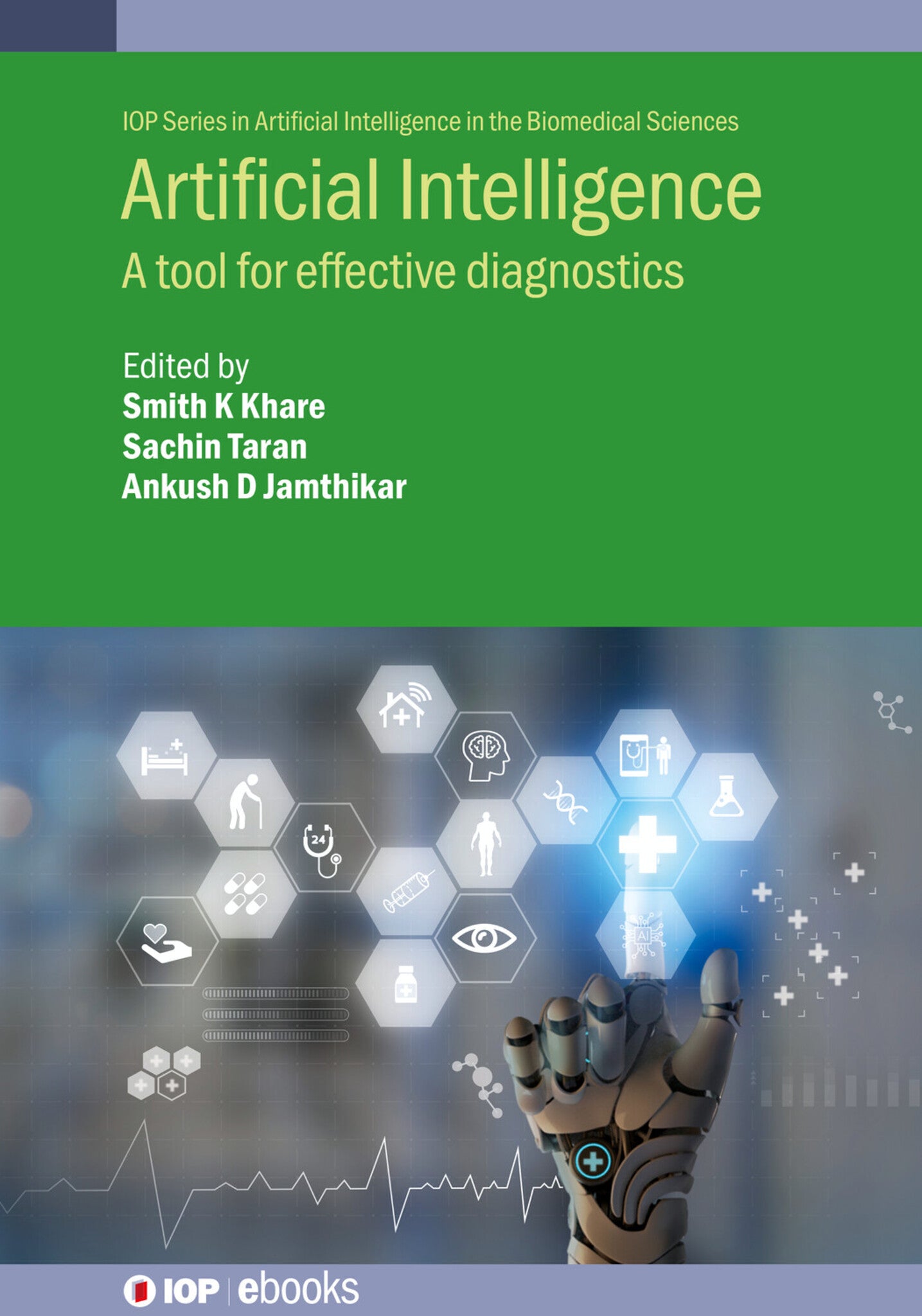We're sorry. An error has occurred
Please cancel or retry.
Artificial Intelligence

Some error occured while loading the Quick View. Please close the Quick View and try reloading the page.
Couldn't load pickup availability
- Format:
-
26 November 2024

The book explores the application of artificial intelligence across various human-machine interfaces, addressing areas such as human attention, emotions, seizures, Alzheimer's disease, focal and non-focal disorders, electrocardiogram rhythms, abnormal heartbeats, and leukemia. It provides a thorough examination of techniques for analyzing and processing both physiological and physical signals, as well as smear blood images. Physiological signals discussed include electroencephalograms (EEG), electrocardiograms (ECG), and electronic health records (EHR), while physical signals encompass human speech. Serving as a comprehensive guide, the book delves into advanced signal processing techniques and the use of machine learning and deep learning for automated signal pre-processing and classification.
Key Features
-
Comprehensive review of the latest trends in physiological healthcare analytics for disease diagnostics
-
In-depth analysis of healthcare and major clinical applications using state-of-the-art AI techniques
-
Application of advanced and adaptive signal analysis methods for improved diagnostics
-
Integration of AI and transfer learning applications in healthcare
-
Contributions from highly cited researchers in their respective fields
-
Chapter content includes summaries, objectives, outcomes, worked examples, and multimedia
-
Extensive references are provided at the end of each chapter to support further research and study

MEDICAL / Diagnosis, Medical diagnosis, MEDICAL / Diagnostic Imaging / General, TECHNOLOGY & ENGINEERING / Biomedical, Pre-clinical medicine: basic sciences, Medical imaging

Preface
Acknowledgements
Editor biographies
List of contributors
Contributor biographies
1 Introduction to AI-driven diagnostics and human-machine interfaces
2 Recent advancements in emerging technology for healthcare management systems
3 The role of high-performance computing in processing electronic healthcare records
4 Detection of attention deficit hyperactivity disorder using electroencephalogram signals: a review
5 Artificial neural network-based classification of eye states using electroencephalogram signals: a comparative analysis of algorithms and artifact removal techniques
6 Hybrid reptile search algorithm-snake optimizer and rational wavelet filter banks for Alzeihmer's disease detection
7 Mother tree optimization for early detection of focal seizure using entropy-based features
8 Automatic detection of seizure activity using EEG signals
9 Prediction of rhythm-based abnormalities in electrocardiograms using time-frequency representations
10 Real-time implementation of ECG beat identification using Hilbert transform and aritificial neural network
11 Simulation and review of blood smear image-based leukemia classification using machine learning methods
12 Subject-independent emotion classification using galvanic skin response and electroencephalogram data
13 Speech emotion recognition using empirical wavelet transform and cubic support vector machine
14 Spectral and spatial analysis of EEG signals for imagined speech recognition
15 Classifying human attention states in EEG-based brain-computer interfacing using singular spectrum analysis



